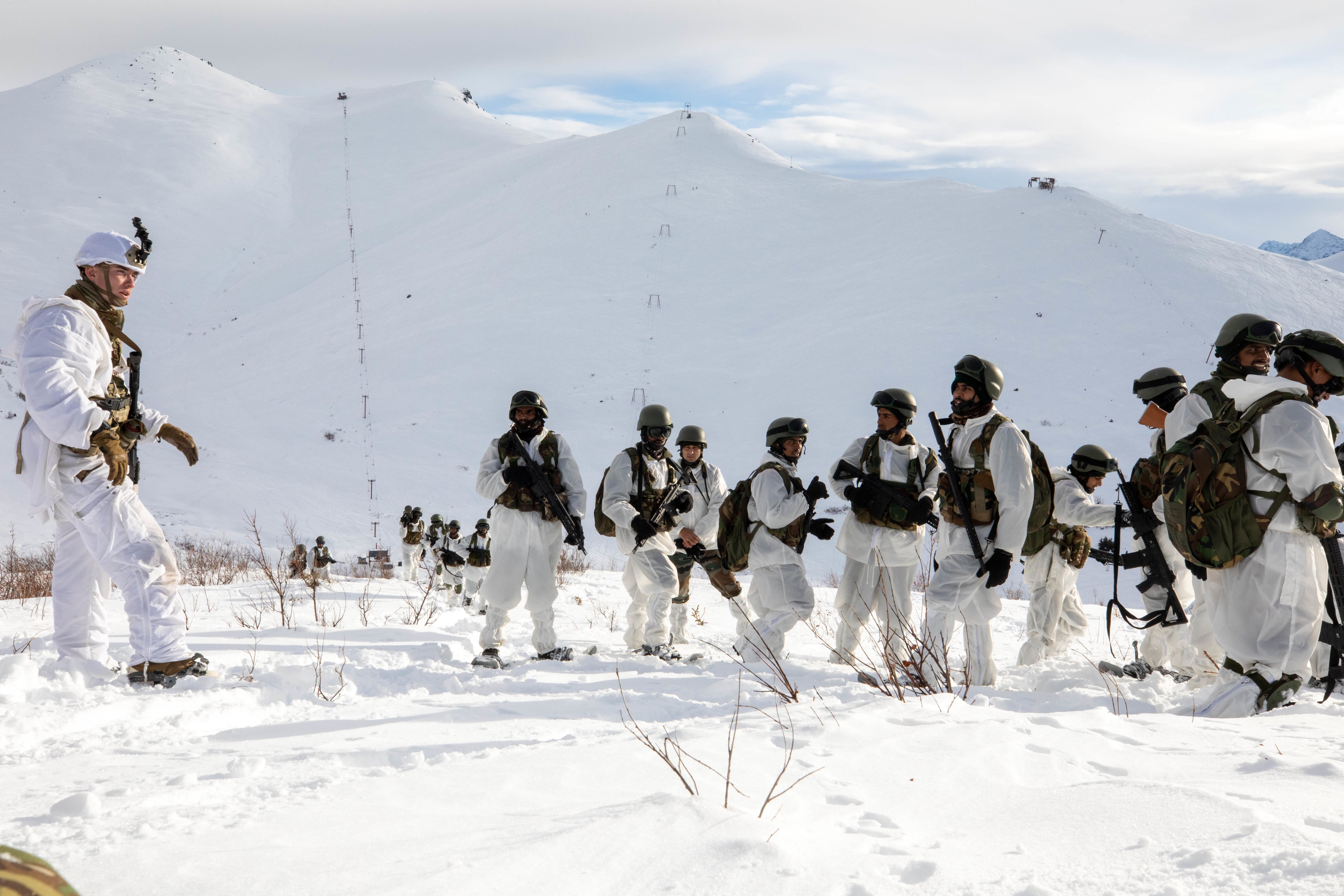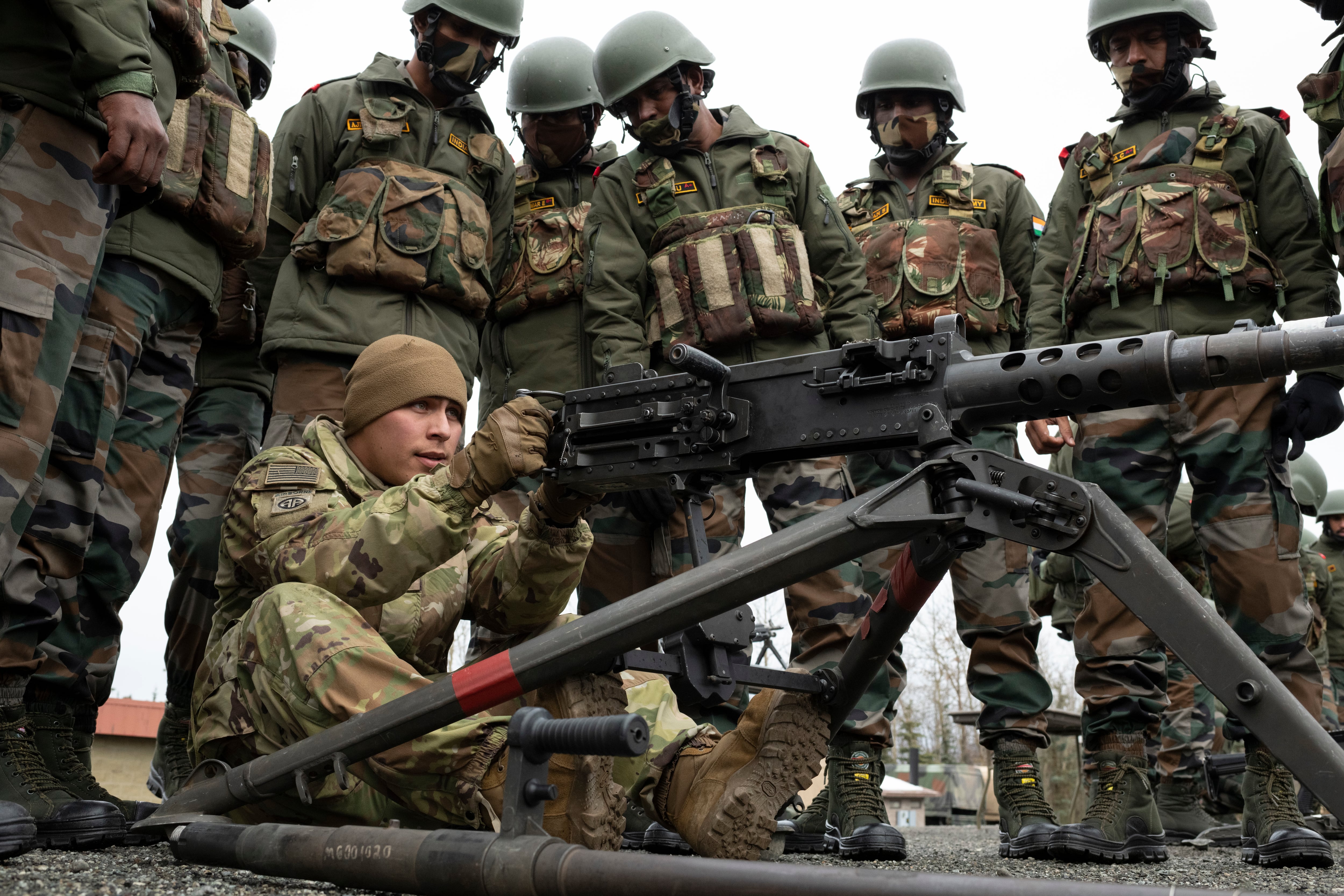U.S. Army Alaska’s bilateral exercise with the Indian Army, dubbed Yudh Abhyas, drew to a close Friday after two weeks of cold weather warfare training and a mock United Nations mission centered around a country torn between rival factions.
Roughly 350 Indian soldiers from 7th Battalion, Madras Regiment, participated in the exercise alongside Alaska-based U.S. paratroopers. The Indian forces may mostly originate from southern India, but they work in the Himalayas, where Indian and Chinese forces have brawled over border disputes in recent months.
“There are no higher, nor more remote, mountains than the Himalayas, and that kind of subject matter expertise is going to make our Paratroopers that much more capable in Arctic warfare,” U.S. Army Col. Jody Shouse said of the Indian soldiers and the skills they brought to the exercise.
Shouse commands 4th Infantry Brigade, 25th Infantry Division, which worked with the Indian forces this year. The Indian unit — nicknamed “Shandaar Saath,” which means “Magnificent Seven” — was led by Indian Army Brigadier Parag Nangare.
The two commanders answered questions posed by Army Times about the exercise, which ran from Oct. 15-29.
Yudh Abhyas sought to improve the interoperability between Indian and U.S. soldiers to help them better work together in future contingencies throughout the Indo-Pacific region, according to the Army.
The exercise showed the two armies that they’re, “much stronger and more effective together,” Shouse said.
“Similarly,” Nangare noted. “We learned about the various technologies that the U.S. Army uses during their combat deployments, especially the counter-Improvised Explosive Device and counter-Unmanned Aerial System drills and equipment.”
“When mixed together, [this] allowed us to overcome problems that might otherwise seem insurmountable,” Shouse added.
According to the two commanders, the exercise consisted of two main components — field training and command post training.
The field work was kinetic, with the culminating event comprised of seizing tactical objectives and capturing a high-value target.

The field training also involved cold weather and high altitude skill development in mountaineering and snow survival, medical evacuations and small arms firing.
“There are certain peculiar conditions which are specific to high altitudes, especially those that affect men and materials,” Nangare said. “Guns and other equipment face a lot of maintenance issues. Range calibration is a challenge and vehicles also face problems both during operations and repair.”
The command post training was based on a mock United Nations mission in a country torn between rival factions. It presented soldiers with the challenges that come with protecting civilian infrastructure and limiting the use of force to comply with U.N. mandates.

“Our staffs focused on the human element,” Shouse said. “[They] focused on supporting the local governments and community leaders, building those relationships, and securing the area to allow for humanitarian aid organizations to render aid where it was needed.”
Both leaders said they felt the exercise was a success, with soldiers from the two armies learning important lessons from one another that they hope to bring back to the table next year.
U.S. troops will be headed to India for the next iteration of the exercise, Shouse said, noting that while the scope of the training may change year-to-year, the relationship between the two armies will continue to grow.
“The ongoing defense cooperation between India and the U.S. is strong and getting more robust with each passing day and year,” Nangare said. “I am sure in the future we will continue our strong partnership.”
“We [will] aim to reciprocate the warmth and hospitality that we experienced here in Alaska,” Nangare added.
COVID-19 mitigation efforts were taken throughout the event, including testing, social distancing, mask mandates, monitoring from medical personnel on the ground and sanitization of all areas utilized, Army officials stated.
Rachel is a Marine Corps veteran and a master's candidate at New York University's Business & Economic Reporting program.





